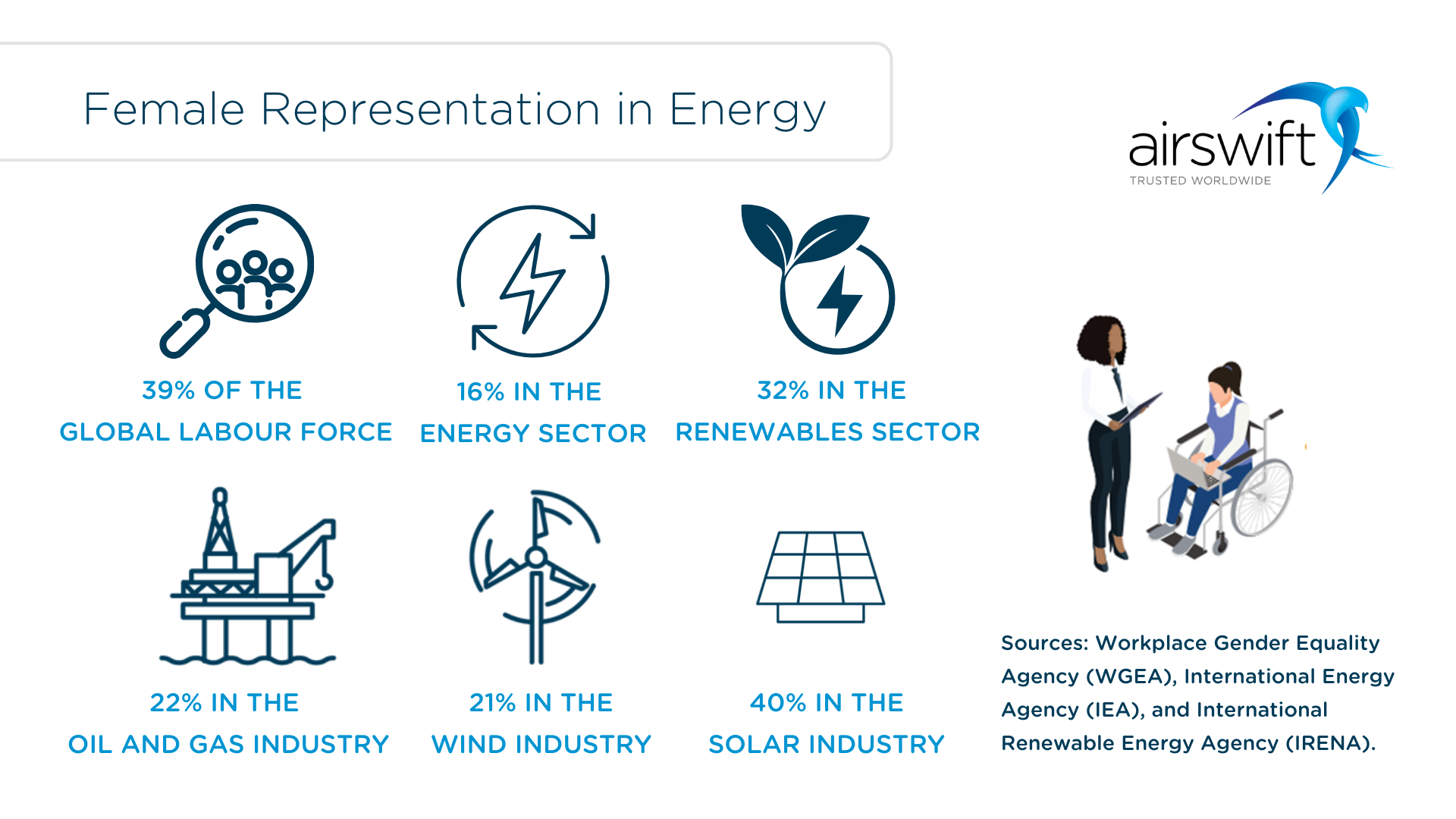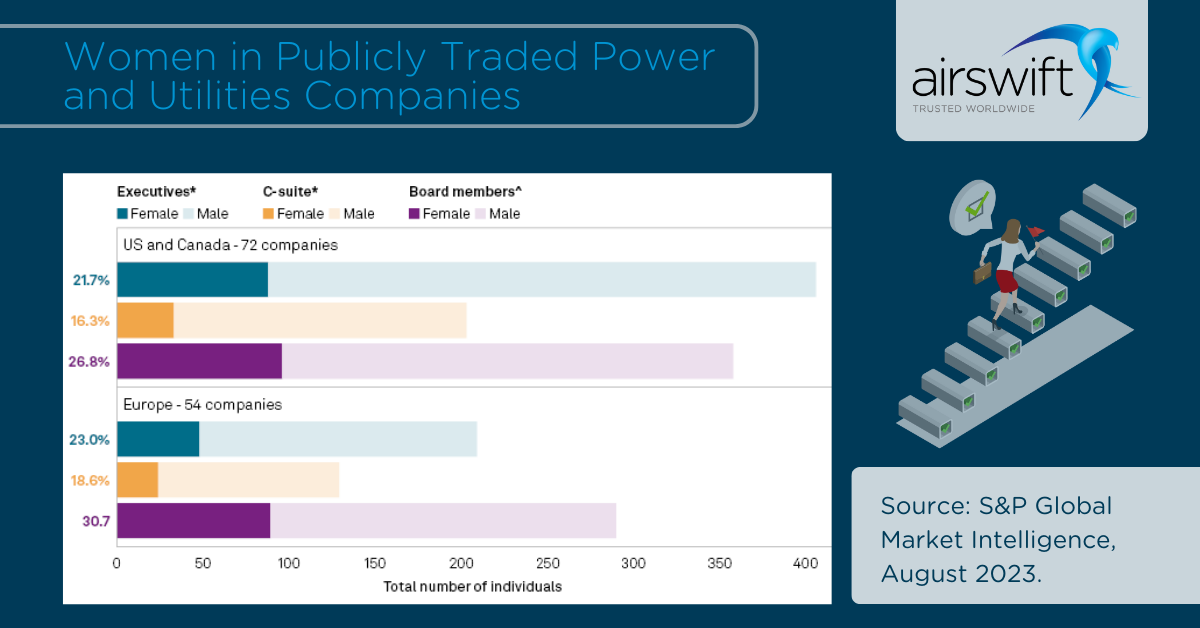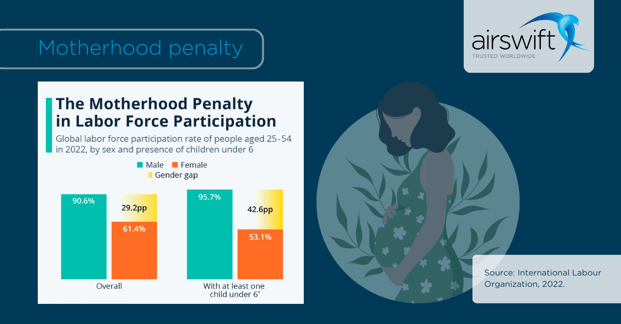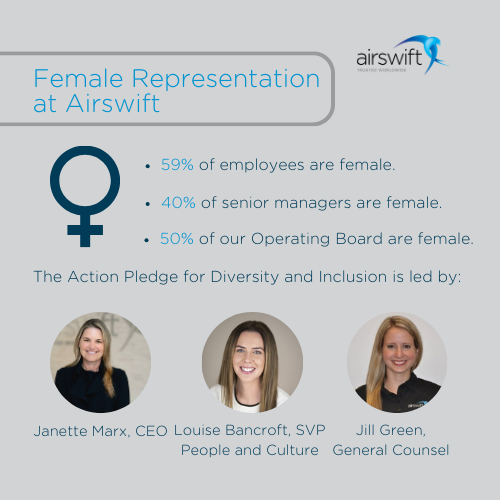Women in energy: Gender equality boosting the energy transition
March 4, 2024
- Home
- Blog

The energy sector stands at a transformative leap towards sustainability and inclusivity. As the world grapples with the dual challenges of climate change and social inequality, the role of women in the energy industry emerges as a potent force for change, offering a new gender perspective that can accelerate the energy transition.
Despite making up about 39 per cent of the global labour force, women's participation in the energy sector remains markedly low, accounting for just 16 per cent. Statistics indicate that they constitute 22 per cent of the workforce in oil and gas and slightly better, at around 32 per cent, in renewables.
The share of women working in full-time positions in the solar PV industry is 40 per cent and in wind energy is 21 per cent. This underrepresentation underscores a vast pool of untapped potential that could drive innovation, diversity of thought, and resilience.

The power of representation
While women are taking on more leadership roles in the long male-dominated power and utilities sector, the industry still has a long way to go to reach parity. According to S&P Global Commodity Insights, women hold about 16.3 per cent of the C-suite positions in the US and Canada and 18.6 per cent of C-suite roles in the European companies analysed.

Women also account for a small percentage of the industry's CEOs. About 9.8 per cent of CEOs for the US and Canadian companies analysed are women. In Europe, the rate is even smaller, at 4.4 per cent, according to Market Intelligence data.
.png?width=1200&height=628&name=Women%20in%20Power%20and%20utilities%20(3).png)
STEM jobs
The disparity highlights the broader issue of gender inequality within STEM jobs, where only 26 per cent of positions are held by women. According to Unesco, 35 per cent of higher STEM education students are women, varying by region. But the good news is that the number of women entering STEM careers is increasing year-on-year, and predictions forecast almost 30 per cent of core STEM roles will be held by women by 2030.
The dialogue on gender and energy has clearly identified women as significant agents of change as consumers, producers, innovators, and decision-makers across the sector. If you want to play a part in the energy transition, find the most in-demand roles and apply your CV.

United Nations Sustainable Development Goals (SDGs) amplify the urgency for gender balance in the energy industry
Connecting the gender disparity to the United Nations' Sustainable Development Goals (SDGs) amplifies the urgency for change. SDG 7 aims to ensure access to affordable, reliable, sustainable, and modern energy for all, while SDG 5 focuses on achieving gender equality and empowering all women and girls.
Together, these goals underscore a synergistic vision where empowering women in the energy sector is fundamental to driving the energy transition forward. The intersection of SDG 7 and SDG 5 illuminates the path towards a more sustainable and equitable world, where energy solutions are crafted through the lens of diversity, ensuring that energy access and innovation benefits are universally shared.
The integration of a gender perspective is also a strategic necessity for business. Studies have shown that companies with higher gender diversity perform better financially, suggesting that inclusivity could enhance efficiency.
Motherhood penalty in all industries

Parenthood is a significant life event that affects professionals in all industries in many ways, including their income, employment opportunities, and job satisfaction. Unfortunately, research conducted by Claudia Goldin, a Harvard economist and Nobel Prize winner, shows that gender biases in the workforce contribute to the Motherhood Penalty and Fatherhood Premium phenomena. But what does it mean?
It refers to the impact of having children on a parent's income. Women experience an average decrease of around 4 per cent in their income for each child they have, while men experience an increase of approximately 6 per cent in their income after becoming fathers.
The research reveals that mothers' labour force participation decreases after giving birth in all 134 countries included in the study. Additionally, women face significant challenges in the workforce when they become mothers. They are perceived as "less committed," "less trustworthy," "less authoritative," and "more emotional" (despite evidence to the contrary).
On the other hand, fathers are perceived as more committed to their work after becoming fathers, receiving higher starting salaries, being held to lower expectations, and getting more time off.
Driving change
 Source: Pexels/Rebrand Cities
Source: Pexels/Rebrand Cities
There are many strategies to ensure the needs, interests and aspirations of mothers, women and girls are valued and included. Find tips for creating a supportive work environment.
- Recruiting, retaining and developing female talent.
- Supporting women and girls in leadership, decision-making, business and STEM.
- Designing and building infrastructure meeting the needs of women and girls.
- Offer Flexible Work Arrangements: providing flexible work arrangements such as telecommuting, flexible hours, and job-sharing can help parents balance their work and family responsibilities.
- Provide Parental Leave: providing parental leave can help parents adjust to their new roles and responsibilities without sacrificing their income or job security.
- Promote Inclusion: acknowledge and address gender biases in the workplace, promote inclusion, and create a supportive work environment for all employees.
- Offer Childcare Support: providing childcare support such as on-site daycare or subsidies for childcare can help parents manage their childcare responsibilities and reduce the stress of juggling work and parenting.
Cultivate a strong professional network
Find some groups supporting and empowering women in STEM careers worldwide.
Hawthorn Club
A network of women executives in the energy industry that encourages the promotion of women. The club was founded in London in 2011 and emphasises the importance of female role models.
Women in Energy
An initiative at Columbia University's Center on Global Energy Policy. It offers educational programming and professional development and addresses barriers to entry and success. They work with the industry to recruit, retain, and promote women into decision-making roles.
Powerful Women Leadership Program
Part of the Australian Institute's Equal by 30 campaign, it develops leadership skills in over 70 women annually in the energy sector. It emphasises strategic, technical, market knowledge, and leadership dynamics in the energy infrastructure.
Women in Renewables
An initiative by the Clean Energy Council that supports women in the renewable energy industry to become empowered leaders. The group focuses on networking, mentoring, coaching, and recognition. It aims to increase women in leadership and board roles for diverse thinking and gender parity.
We are Airswift
At Airswift, promoting inclusion is essential to building a diverse and innovative workforce. Because we are a people business, our company thrives when our people do.
We are committed to progressing against SDGs and have strived to build a company with the ESG best practices. Want to know about Diversity and Inclusion at Airswift?

This post was written by: Nana Terra, Content Marketing Coordinator
You may also be interested in…
-
Transferrable skills within the energy sector: challenges and opportunities
-
Has renewable energy promoted inclusion and gender balance?
-
Unlocking energy data: a guide to Energy Management Software (EMS)
-
What can Oil & Gas companies do to retain talent during the energy transition?
-
5 attributes of great African energy recruitment agencies
-
Top 3 wind energy projects in Australia
-
Navigating the energy sector: Insights from the 2024 GETI report
-
Why the workforce is pivotal to the energy transition
-
Want to transition from Oil & Gas to Clean Energy? Here's how
-
The next energy generation: engage and attract Gen Z






